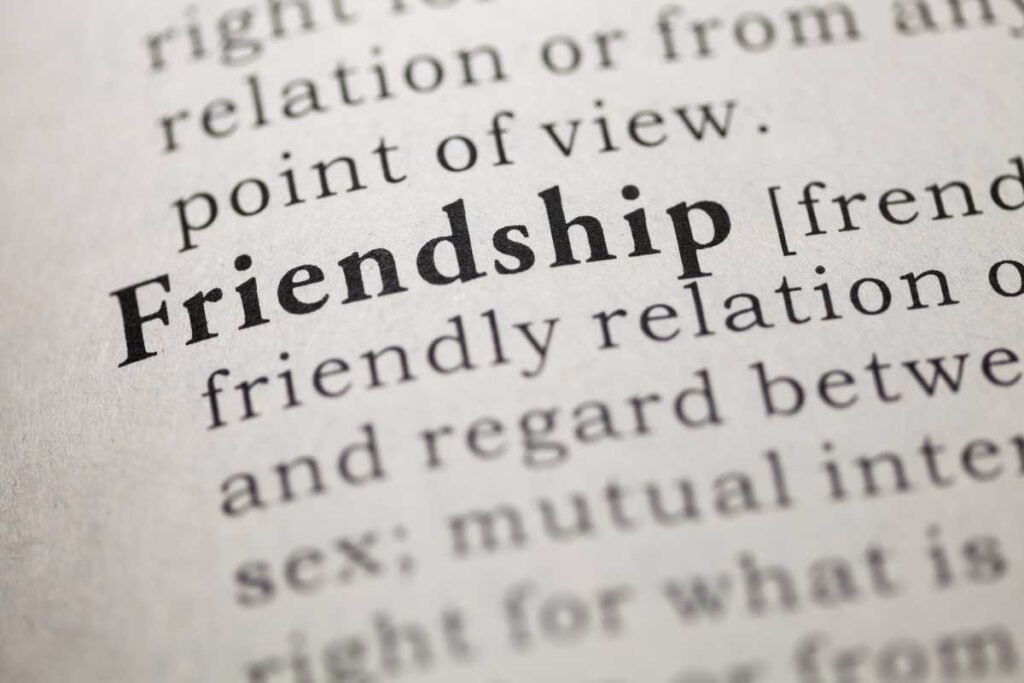Friendships are an integral part of our lives, providing support, joy, and a sense of belonging. However, it’s not uncommon to experience shifts in your circle of friends over time. One intriguing phenomenon is the “7-Year Friendship Theory,” which suggests that our friendships undergo significant changes approximately every seven years. But is there any truth to this theory? Let’s dive into what this theory means and explore the reasons behind these changes.
What is the 7-Year Friendship Theory?
The 7-Year Friendship Theory is a concept that proposes our friendships go through a notable transformation roughly every seven years. This idea is rooted in the belief that our personal development and life circumstances shift significantly in seven-year cycles, which in turn affects our social relationships. The theory is inspired by the broader concept of seven-year life cycles, which suggest that individuals experience significant changes in their lives approximately every seven years.

The theory posits that as individuals go through different stages of life—such as adolescence, early adulthood, and middle age—our needs, interests, and priorities evolve, leading to shifts in our friendships. These changes are often influenced by milestones such as graduating from school, starting a career, or entering a new phase of personal growth. As we encounter these transitions, our social circles naturally adapt to reflect our evolving self.
Additionally, the 7-Year Friendship Theory is linked to the concept of biological and psychological rhythms. Research in developmental psychology indicates that humans undergo significant psychological and physiological changes roughly every seven years. For example, the brain undergoes notable developmental shifts during adolescence and early adulthood, influencing how we interact with others. This rhythmic cycle can affect how we relate to friends, as our evolving sense of identity and social needs lead us to form new connections and re-evaluate existing ones. As a result, friendships that once felt central to our lives might change or dissolve, making way for new relationships that align more closely with our current life stage and personal growth.

Why Do Friendships Change Every Seven Years?
So, why every seven years? One theory lies in the concept of biological rhythms. Human beings experience various developmental and hormonal shifts roughly every seven years, which can influence our social behaviors and preferences. For example, the brain undergoes significant changes in adolescence and early adulthood, affecting how we relate to others.

Another angle comes from psychosocial development. According to Erik Erikson’s stages of psychosocial development, individuals go through different phases of personal growth and identity formation, each influencing our relationships. Every seven years, we might find ourselves at a new stage of self-awareness and social interaction.

The Rhythm of Life
To understand the 7-Year Friendship Theory, let’s first explore the rhythm of our lives. Think about it: major life stages tend to align with seven-year intervals. From childhood to adolescence, adulthood, and beyond, each seven-year period is marked by significant changes in our personal development and social circles.
Childhood (0-7 years): This period is filled with the wonder of discovery and forming early bonds. Friendships are often forged in the innocence of playdates and school activities. These early friends often serve as our first taste of companionship and trust.

Adolescence (8-14 years): Here comes the turbulence of puberty and the quest for identity. Friendships become more complex and layered as we begin to form our personal values and interests. It’s common for childhood friends to drift apart as new connections are made based on shared interests and experiences.
Young Adulthood (15-21 years): This is a transformative time of exploring independence and self-discovery. Friendships during this period are often deeply intense and emotional, as we navigate new life experiences like college or entering the workforce. Bonds formed now might feel like they will last forever, but they often undergo a shift as we transition into adulthood.
Adulthood (22-28 years): As we start to settle into our careers and potentially family life, our social needs and priorities shift. Friendships from our earlier years might change as we develop new ones based on shared life goals and responsibilities. It’s a time of re-evaluating what we truly value in our friendships.
Late 20s to Early 30s (29-35 years): This period often involves settling into a stable career and, for many, starting families. Friendships from earlier in life might change or fade as we prioritize our new roles and responsibilities. It’s a time for forming connections with others who are navigating similar life stages.

Navigating the Shifts
Understanding the 7-Year Friendship Theory can help us navigate these inevitable changes with grace and insight. Here’s how you can embrace these shifts in your friendships:

- Embrace Change: Accept that it’s normal for friendships to evolve. Rather than clinging to the past, appreciate the new dynamics and connections that arise.
- Communicate Openly: If you sense a change in your friendship, talk about it. Open conversations can strengthen bonds and help you navigate new phases together.
- Seek New Connections: As old friendships shift, be open to meeting new people who align with your current life stage and interests.
- Cherish the Memories: Celebrate the history and experiences you’ve shared with long-standing friends. Even if the friendship changes, the memories and growth remain valuable.
- Focus on Quality: Prioritize deep, meaningful connections over the quantity of friends. As we age, we often value quality over quantity in our relationships.

Final Thoughts
The 7-Year Friendship Theory offers a fascinating lens through which to view our social lives. It reminds us that change is a natural and necessary part of growth. Embrace the ebb and flow of friendships with curiosity and compassion, knowing that each shift brings new opportunities for connection and understanding.
So, the next time you find your friendships taking on a new shape, remember: it’s all part of the beautiful, cyclical rhythm of life.
